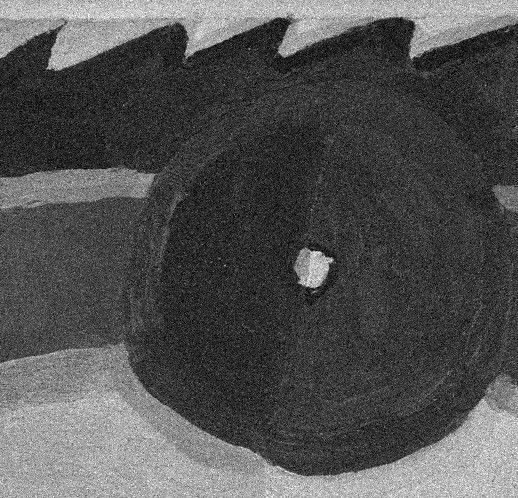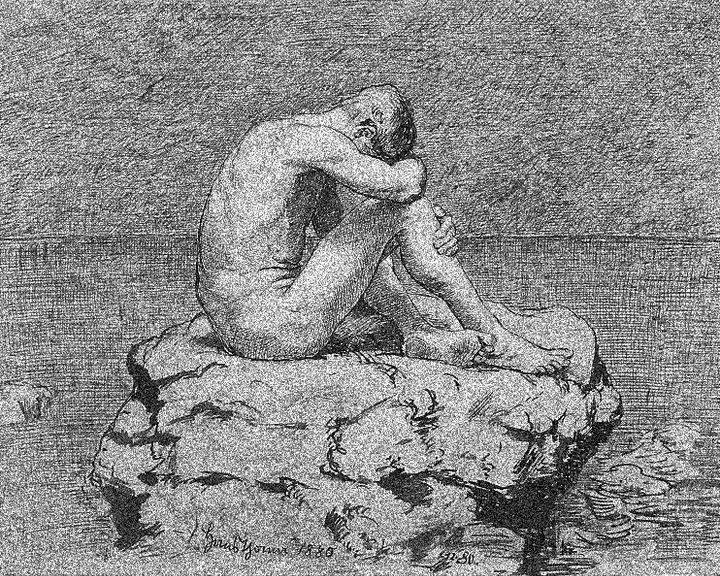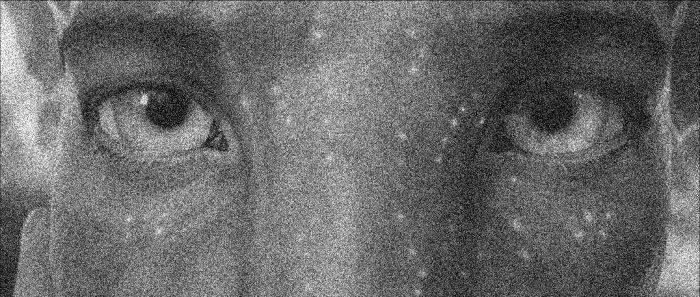Stable Locus of Personal Identity
The revolutionary blockchain technology for solving an old metaphysical problem.

I thought I was so clever. For a few days, anyway.
In early 2021, as you almost certainly know, “Non-Fungible Tokens”, or NFTs, burst onto the scene and changed the way we talk and think. An NFT is a sort of digital title or deed, comparable to the papers in your glove compartment establishing ownership of the car. Unlike the paper title, however, the NFT is based on blockchain, a distributed-ledger technology that lives on the open internet, and of which we are all, collectively, the bookkeepers and guardians. After the auction for $69 million of an NFT for a work by the American digital artist Mike Winkelmann (aka Beeple) on March 11, I immediately began minting “joke” NFTs. I imagined these to be “very serious jokes”, experimentally pushing the concepts of value and of tokenization right up to their limits for the sake of some urgent “point”.
Thus for example I minted a “Token of the Type/Token Distinction Itself”, which swiftly sold for $200 (to a computational linguist who wanted to give his students a good laugh). Buoyed by this success, I went on to mint “the Non-Fungible Token of All Non-Fungible Tokens”, followed by a variation on that famous set-theoretic impossibility, “The Non-Fungible Token of All Non-Fungible Tokens That Are Not Non-Fungible Tokens of Themselves”. I was “in my zone”, as they say. Though none of these subsequent experiments managed to get sold, I was having the time of my life cranking out joke-tokens at record pace.
But then, as always happens on the internet, I quickly noticed that a number of other people had —of course!—had exactly the same inspiration and were coming up with “jokens” at least as good as mine: some smart-ass minted a token of the Universe; another, with an antiquarian’s sensibility I could not fail to appreciate, made an NFT of the Brooklyn Bridge and put it up for sale.
Never one to linger for long on someone else’s “bingo card”, I realized I was going to have either to get more sophisticated or more sincere. It dawned on me that I could do both: I could start minting NFTs that speak to real problems—philosophical, political, moral—and that would perhaps point the way to solving them.
This is how I came to mint the first “Stable Locus of Personal Identity” (SLPI). I billed it as a “revolutionary blockchain technology for solving an old metaphysical problem.”
For prospective buyers I offered a brief historical and conceptual summary of the thinking behind this new NFT. The alchemists of old, I explained, long hypothesized that any element, when burnt down to ash, must still leave somewhere in its residue a caput mortuum or “death’s head” in which the seemingly vanished substance endures. The kabbalists, I went on, proposed that the permanent anchor of selfhood for any being (or at least any vertebrate) is to be found in the lowest bone of the spine, called by them the luz, and by us the coccyx. René Descartes in turn famously zeroed in on the pineal gland as the sedes animae, opening himself up to the apparently fatal objection that, if “thinking stuff” and “extended stuff” have nothing whatsoever in common, it is entirely unclear how some particular portion of the brain should have this tremendous privilege of playing host to the soul.
Wherever it has been held to be, I continued, we all agree that the self (or the soul or mind, as you wish), must be somewhere. And yet, while the physical body has often presented itself as the most obvious place to look for it, this mortal coil of loosely soldered parts also presents some obvious problems. First among these is that sooner or later it comes apart, and leaves little more than the residue in an alchemist’s furnace. Yet even after this happens, most religious and philosophical traditions throughout the world suppose, something of the person remains. You can look for it in ashes or in vertebrae, but the more you pick through nature’s thorns, the more you will doubt that the surviving self is, or ought to be, anchored to something physical at all.
This, I proposed, is where blockchain technology can help clear things up. The SLPI now can function for its owner as the unique anchor of selfhood in perpetuity. Thanks to the distributed-ledger technology on which NFTs are based, an SLPI is permanently linked to the entity of which it is a token, even under conditions of that entity’s apparent absence or unlocatability.
Up until this moment, the new technology had been used to anchor only a limited range of abstract entities, notably “artworks” such as Beeple’s, and similar will-o’-the-wisps. I extended the same principle to the anchoring of the most precious abstract entities of all: to wit, selves.
Such a move, I acknowledged, may well still seem unnecessary. After all, human cultures have long found ways to keep ancestors “alive”, through the power of memory and memorialization, even in the absence of a physical body. But in the coming years, I suggested, as the possibility of “uploading” ourselves before or after death —perhaps simply through careful autobiographical curation of a self that will endure online, but perhaps also in the literal transfer of the conscious subject into silicon-based immortality— it will grow increasingly important to fix selfhood in a way that is no longer dependent on the physical body; not just for the memory of others, but for the practical management of our individual lives and legacies.
You can imagine my surprise when, just after launching my first SLPI, the multimillionaire art-collector and philanthropist Nicolas Berggruen (founder of a controversial “philosophy prize” that bears his name) tweeted, in all seriousness, that he envisioned a near future in which blockchain technology will anchor our civic and perhaps also our personal identity. “Each individual life is an asset,” Berggruen explained in a first tweet dated March 23, 2021, “valuable just by being. This as a participant in the economy, and as data.” And he followed this up quickly with a second tweet in a similar key: “Therefore individuals could be tokenized on the block chain, unlocking their potential economic value. It may sound utopian,” Berggruen conceded, “yet it might be a financing mechanism to fund people throughout their lives, if use [sic] within reasonable limits.”
The era of tokenized individuals was beginning; not as a joke, not even as a serious joke, but in absolute earnest.
Some scholars of the history of alchemy have observed that more or less every desideratum the alchemists imagined would eventually come into existence in some form: thus the nuclear power plant is something quite like the old idea of the perpetuum mobile, and plastic gives us what they called “bendable glass”. While there is no hard and fast rule, it generally seems that to imagine a new technology is to set in motion the sequence of events that will make it real. Thus, although at great cost, and with no more than a few nanoparticles for a few nanoseconds, it seems that we are now on the brink of making teletransportation a reality.
Our will, it sometimes seems, is as God’s will was long imagined to be: He had no more to think something than for the object of his thought to become real. Yet in God this power was accompanied by wisdom; for our part we think up now this thing, now that one, only because we can.
It seems more or less certain that it was just such free play of the imagination that brought the tokenized self into existence in early 2021. I am fairly certain that Berggruen’s audacious proposal will soon be part of the mundane reality of our administered lives, something we will take for granted, just as we now take for granted that the records of birth and death in county registries of vital statistics track the truth about us from cradle to grave.
There could have been no stopping it, but in any case I am already sorry I allowed my imagination to stray in this direction. As if anything in our era could be “just a joke”, as if the jocular and the serious had not been sublated into one another by the internet.
■
Justin E.H. Smith writes from Paris. His next book is The Internet is Not What You Think It Is (Princeton, 2021). Subscribe to his Substack newsletter here.



